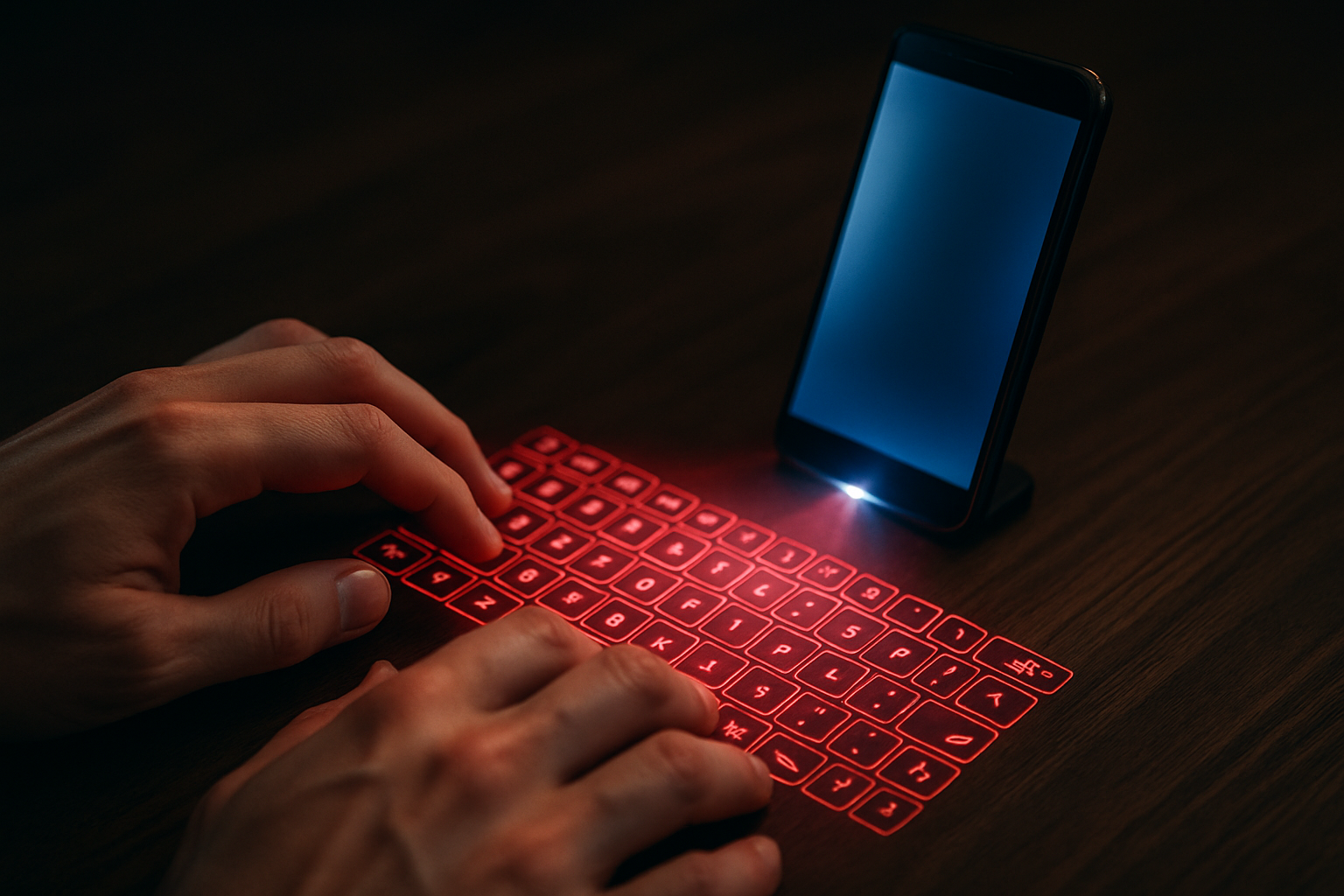Holographic Keyboards: Typing in Thin Air
In the ever-evolving landscape of computer interfaces, a futuristic technology is quietly making waves: holographic keyboards. These ethereal input devices project a virtual keyboard onto any flat surface, allowing users to type without physical keys. As we stand on the brink of widespread adoption, holographic keyboards promise to revolutionize how we interact with our devices, offering a blend of sci-fi fantasy and practical functionality.

Early prototypes were bulky, unreliable, and far from practical for everyday use. They struggled with accuracy issues, often misinterpreting finger movements or failing to register keystrokes altogether. Despite these setbacks, tech enthusiasts and forward-thinking companies continued to push the boundaries of what was possible.
How Holographic Keyboards Work
At their core, holographic keyboards utilize a combination of laser projection and infrared sensing technology. A small projector casts the image of a keyboard onto a flat surface, while an infrared sensor tracks the movement of the user’s fingers. When a finger “presses” a virtual key, the sensor detects the movement and translates it into a keystroke.
Modern holographic keyboards have made significant strides in accuracy and responsiveness. Advanced algorithms and machine learning techniques help these devices distinguish between intentional keystrokes and accidental movements, greatly reducing input errors. Some models even incorporate haptic feedback, using subtle vibrations to simulate the tactile sensation of pressing physical keys.
The Advantages of Typing on Air
Holographic keyboards offer several compelling advantages over their physical counterparts. Perhaps most notably, they’re incredibly portable. With no physical components beyond the projector and sensor unit, these keyboards can be easily integrated into smartphones, tablets, or even wearable devices.
Hygiene is another key benefit, especially in shared environments. Without physical keys to harbor germs and bacteria, holographic keyboards offer a more sanitary typing experience. This feature has gained particular relevance in the wake of global health concerns, making them an attractive option for public spaces and healthcare settings.
Customization is yet another strong suit of holographic keyboards. Users can easily switch between different keyboard layouts, languages, or even custom configurations with a simple software update. This flexibility makes them ideal for multilingual users or those with specific typing needs.
Current Challenges and Limitations
Despite their potential, holographic keyboards still face several hurdles before achieving mainstream adoption. One of the most significant challenges is the lack of tactile feedback. While some models incorporate haptic technology, the sensation still falls short of the physical keys many users are accustomed to.
Environmental factors also play a crucial role in the performance of holographic keyboards. Bright ambient light can interfere with the projection, making the virtual keys difficult to see. Similarly, uneven or textured surfaces can impact the accuracy of keystroke detection.
Battery life is another consideration, especially for mobile devices. The constant projection and sensing required for holographic keyboards can be power-intensive, potentially impacting the overall battery life of the host device.
The Future of Holographic Input
As technology continues to advance, many of these challenges are likely to be overcome. Researchers are exploring new ways to improve tactile feedback, including the use of ultrasonic waves to create the sensation of physical resistance in mid-air. Advancements in low-power projection and sensing technologies promise to make holographic keyboards more energy-efficient and suitable for long-term use.
The potential applications of holographic input extend far beyond traditional keyboards. Imagine virtual control panels for smart home devices, holographic touchscreens floating in mid-air, or even three-dimensional interfaces for gaming and virtual reality experiences. As the technology matures, we may see a fundamental shift in how we interact with our digital world.
Market Impact and Pricing
While holographic keyboards are still largely in the realm of prototypes and niche products, several companies are working to bring them to the mass market. Current consumer-grade models range from $100 to $300, positioning them as premium accessories for tech enthusiasts and early adopters.
As production scales up and technology improves, prices are expected to drop significantly. Industry analysts predict that within the next five years, holographic keyboards could become a standard feature in high-end smartphones and tablets, with standalone units available for under $100.
The global market for holographic input devices is projected to reach $1.5 billion by 2025, driven by increasing demand for innovative, space-saving input solutions in both consumer and enterprise sectors. This growth could have far-reaching impacts on the broader computer peripherals market, potentially disrupting traditional keyboard manufacturers.
As we stand on the cusp of this holographic revolution, one thing is clear: the way we type is about to change dramatically. Whether holographic keyboards will fully replace their physical counterparts remains to be seen, but their potential to transform our digital interactions is undeniable. The future of typing may well be invisible, silent, and as limitless as our imagination.





